Lurianic Kabbalah, a school of Jewish mysticism founded by Rabbi Isaac Luria in the 16th century, presents a complex and intriguing cosmology that involves three demonic forces: Lilith, Samael, and Asmodeus.
These three entities rule over the realms of air, fire, and water, respectively, and oppose God and humanity in various ways. They are also related to each other as husband, wife, and son, and play different roles in the cosmic drama of creation, history, and redemption.
In this article, I will explore the origins, characteristics, and interactions of these three demons, based on the teachings of Luria and his disciples. I will also examine how Lurianic Kabbalah offers a way to resist their influence and overcome their malice by performing acts of tikkun (repair or restoration).
Lurianic Kabbalah: A Brief Overview
Lurianic Kabbalah is a school of Jewish mysticism that developed in the 16th century in Safed, Israel, under the influence of Rabbi Isaac Luria (1534-1572), also known as the Ari. His teachings were recorded and systematized by his disciples, especially Rabbi Hayyim Vital (1543-1620), in various works, such as the Etz Hayyim (Tree of Life) and the Shemoneh She’arim (Eight Gates).
Lurianic Kabbalah offers a new and complex cosmology that explains the origins of creation, the nature of evil, and the purpose of human existence. According to Luria, before creation, there was only Ein Sof (the Infinite), the transcendent aspect of God.
Ein Sof contracted itself (tzimtzum) to create a space for creation to emerge. Within this space, Ein Sof emanated ten sefirot (divine attributes or emanations) that formed the primordial world of Adam Kadmon (Primordial Man).
From Adam Kadmon’s eyes, ears, nose, and mouth, four worlds were projected: Atzilut (Emanation), Beriah (Creation), Yetzirah (Formation), and Assiyah (Action). Each world contained ten sefirot and numerous sparks of divine light.
How the Shells of Evil Trapped the Divine Light
According to Luria, something went wrong in the process of creation. The vessels (kelim) that contained the sefirot in the world of Tohu (Chaos), a sub-level of Beriah (Creation), were too fragile to hold the intense light that flowed from Adam Kadmon (Primordial Man).
The vessels shattered (shevirat ha-kelim) and their fragments fell into the lower worlds, along with the sparks of light that they contained. These fragments became the source of evil and impurity in creation, known as kelipot (shells or husks).1
The Four Levels of Evil
The kelipot are divided into four levels that correspond to four worlds:
- Thaumiel (Twins of God), which belongs to Atzilut (Emanation);
- Samael, Lilith, and Asmodeus, which belong to Beriah (Creation);
- Harab Serapel (Burning Wrath), which belongs to Yetzirah (Formation);
- Nahemoth (Whisperers), which belongs to Assiyah (Action).
The sparks of light became trapped within the kelipot, which fed on them and prevented them from returning to their source.
The Sparks of Light and Their Liberation
The main task of humanity is to liberate the sparks of light from the kelipot and restore them to their original place. This is achieved through performing mitzvot (commandments) and studying the Torah (the sacred scriptures), which elevate the sparks to their proper level.
This process is called tikkun (repair or restoration), and it aims to heal the cosmic fracture caused by the shattering of the vessels. When all the sparks are redeemed, evil will be eliminated and creation will be reunited with its source. This is the ultimate goal of history and the messianic era.
Lilith: The Mother of Demons
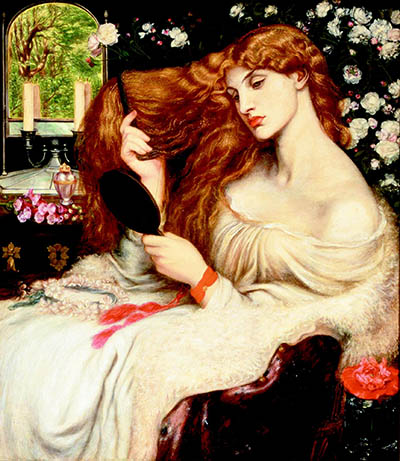
Lilith is one of the most notorious figures in Jewish folklore and kabbalah. She is often depicted as a demonic woman who seduces men, kills children, and rebels against God. According to some legends, she was the first wife of Adam, who left him because she refused to submit to him. She then became the consort of Samael, the archangel of evil, and gave birth to countless demons. In Kabbalah, Lilith represents the feminine aspect of the left emanation, the realm of impurity and darkness.
In Lurianic Kabbalah, Lilith is identified with one of four levels of evil that correspond to four worlds:
- Nogah (Glittering), which belongs to Atzilut;
- Lilith proper, which belongs to Beriah;
- Naamah (Pleasantness), which belongs to Yetzirah;
- Igrat bat Mahalat (Igrat daughter of Mahalat), which belongs to Assiyah.
These four levels are also associated with four wives or consorts of Samael: Agrat bat Mahalat; Naamah; Lilith; and Isheth Zenunim (Woman of Whoredom).
Rabbi Isaac describes Lilith as the second level of evil that corresponds to the sefirah of Binah in his treatise “On the Left Emanation”. He writes:
And this is Lilith, who is called ‘the mother of the children of whoredom’ (Hosea 2:4), for she is the mother of all the demons and all the evil spirits that fly about in the world. And she is called ‘the Great Whore’ (Revelation 17:1), for she copulates with all men and causes them to spill their seed in vain.
On the Left Emanation – Rabbi Isaac
Lilith, as the second level of evil, represents the aspect of evil that is related to the sefirah of Binah (Understanding), which is the source of life and the mother of all souls. Lilith, as the opposite of Binah, is the source of death and the mother of all demons. She represents the dark and chaotic aspects of femininity, sexuality, and death.
The Great Whore, as she is also called, seduces men and causes them to spill their seed in vain. With this seed, she impregnates herself and produces more demons. She also attacks pregnant women and newborn children, especially boys, to prevent the birth of the Messiah.
Lilith is also connected to the moon, which symbolizes the feminine principle in creation. Lilith represents the dark side of the moon, which is hidden from human sight. She is also associated with the lunar phases, which affect human behavior and emotions.
According to Luria, Lilith has dominion over the first half of the lunar month, when the moon wanes and darkness increases. During this time, Lilith’s power is stronger and her influence is more harmful. Therefore, Luria advised his followers to avoid sexual intercourse during this period, as it would expose them to Lilith’s attacks.
Samael: The Prince of Demons
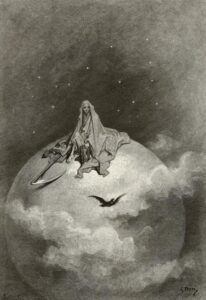
Samael is one of the most powerful and ambiguous angels in Jewish tradition and Kabbalah. He is sometimes identified with Satan, the adversary of God and humanity, and sometimes with Sammael, the angel of death. He is also associated with various sins and temptations, such as pride, lust, envy, and wrath. In Kabbalah, Samael represents the masculine aspect of the left emanation, the source of evil and chaos. He is the husband of Lilith and the father of Asmodeus, the king of demons.
In Lurianic Kabbalah, Samael is identified with one of four levels of evil that correspond to four worlds:
- Thaumiel (Twins of God), which belongs to Atzilut;
- Samael proper, which belongs to Beriah;
- Baal Zebub (Lord of Flies), which belongs to Yetzirah;
- Adrammelech (King of Fire), which belongs to Assiyah.
These four levels are also associated with four heads or aspects of Samael:
- Satan (Adversary), who accuses and opposes Israel;
- Azazel (Scapegoat), who tempts and seduces humanity;
- Mastema (Enmity), who persecutes and afflicts humanity;
- Belial (Worthless), who corrupts and defiles humanity.
In “Eight Gates”, Rabbi Hayyim Vital summarizes Rabbi Isaac’s teachings on Samael as the second level of evil that corresponds to the sefirah of Hokhmah.
And this is Samael, who is called ‘the Great Serpent’ (Isaiah 27:1), for he coils around all creation and injects his venom into it. And he is called ‘the Prince of this World’ (John 12:31), for he rules over all the kelipot and all the forces of evil. And he is called ‘the Angel of Death’ (Psalms 78:49), for he takes away the souls of the wicked
Eight Gates – Rabbi Hayyim Vital
Samael is also known as the Great Serpent, who coils around creation and injects his venom into it. His destructive nature is symbolized by fire, which he is associated with. He represents the dark side of the sun, which is another symbol of his connection to the masculine principle in creation. The sun scorches and burns creation, just like Samael. He also influences human behavior and emotions through the solar phases, which he is connected to.
According to Luria, Samael has dominion over the second half of the lunar month, when the moon waxes and light increases. During this time, Samael’s power is weaker and his influence is less harmful. Therefore, Luria advised his followers to engage in sexual intercourse during this period, as it would elevate them above Samael’s reach.
Asmodeus: The King of Demons
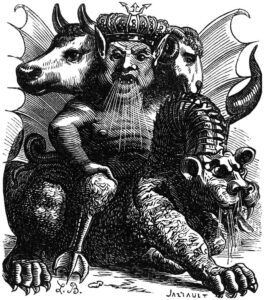
Asmodeus is one of the most prominent demons in Jewish literature and kabbalah. He is best known for his appearance in the Book of Tobit, where he kills seven husbands of Sarah before being defeated by Tobias and Raphael. He is also mentioned in the Talmud, where he is said to have tricked King Solomon into giving him his ring and throne. In Kabbalah, Asmodeus represents the son of Samael and Lilith, and the ruler of the kelipot, the shells or husks that contain the sparks of divine light trapped in evil
In Lurianic Kabbalah, Asmodeus is identified with one of four levels of evil that correspond to four worlds:
- Satariel (Concealment of God), which belongs to Atzilut;
- Asmodeus proper, which belongs to Beriah;
- Astaroth (Goddess of Fertility), which belongs to Yetzirah;
- Belphagor (Lord of the Gap), which belongs to Assiyah.
These four levels are also associated with four horns or aspects of Asmodeus:
- Keshaphim (Sorceries), which cause people to stray from God’s path;
- Shedim (Demons), which possess and torment people;
- Lilin (Night Spirits), which seduce and deceive people;
- Ruhot Ra’ot (Evil Spirits), which afflict and harm people.
In “On the Left Emanation”, Rabbi Isaac describes Asmodeus as the second level of evil that corresponds to the sefirah of Da’at.
And this is Asmodeus, who is called ‘the King of Lust’ (Tobit 3:8), for he inflames all people’s passions and desires. And he is called ‘the King of Demons’ (Talmud Gittin 68a), for he rules over all kinds of sorceries, demons, night spirits, and evil spirits. And he is called ‘the King of Fire’ (Midrash Rabbah Deuteronomy 2:31), for he burns and consumes everything with his fire
On the Left Emanation – Rabbi Isaac
Asmodeus, as the opposite of Da’at, is the source of evil revelation and ignorance. He is also called the King of Lust, who inflames people’s passions and desires. He is also associated with water, which symbolizes his fluid and adaptable nature. He is also connected to the planet Jupiter, which symbolizes expansion and abundance. Asmodeus represents the dark side of Jupiter, which leads to excess and greed. He is also associated with the zodiac sign of Sagittarius, which affects human behavior and emotions.
According to Luria, Asmodeus has dominion over the third quarter of the lunar month, when the moon is full and bright. During this time, Asmodeus’s power is moderate and his influence is mixed. Therefore, Luria advised his followers to be cautious and vigilant during this period, as it would expose them to Asmodeus’s temptations.
The Triad of Evil
According to Lurianic Kabbalah, Lilith, Samael, and Asmodeus are both independent entities and interrelated and interdependent. They correspond to three levels of reality:
- Lilith to the world of action (Assiyah),
- Samael to the world of formation (Yetzirah),
- Asmodeus to the world of creation (Beriah).
They also correspond to three aspects of human nature:
- Lilith to sexual desire (Yesod),
- Samael to intellect (Da’at),
- Asmodeus to will (Ratzon).
Their purpose is to prevent humans from achieving spiritual perfection and union with God. However, according to Lurianic Kabbalah, humans have the power to transform evil into good by performing acts of repentance (teshuvah), charity (tzedakah), prayer (tefillah), and mystical contemplation (kavvanah). By doing so, they can liberate the sparks of divine light from the clutches of the triad of evil, and restore harmony and balance to the cosmos
Lilith, Samael, and Asmodeus interact with each other in various ways, depending on their relative positions and phases. Sometimes they cooperate and complement each other, creating a powerful force of evil that challenges God and humanity. Sometimes they compete and conflict with each other, creating a chaotic situation that disrupts creation and history. Sometimes they balance and neutralize each other, creating a stable condition that allows for tikkun and redemption.
One example of their interaction is the story of King Solomon and the building of the Temple in Jerusalem. According to Lurianic Kabbalah, Solomon was able to build the Temple with the help of Asmodeus, who gave him a magic ring that enabled him to control demons.
However, Asmodeus did not do this out of goodwill, but out of jealousy and rivalry with Samael, who was the guardian angel of Edom (Rome), the enemy of Israel. Asmodeus wanted to undermine Samael’s authority and prestige by helping Solomon build a monument that would glorify God and Israel.
Rather than remaining passive, Samael plotted against Solomon with Lilith to seduce Solomon into idolatry and sin and cause him to lose his wisdom and power. They also stole his magic ring and banished him from his kingdom. They then took over his throne and pretended to be Solomon and his wife, Pharaoh’s daughter. They ruled over Israel with tyranny and corruption, until Solomon managed to recover his ring and reclaim his kingdom.
Conclusion
In this article, we have explored the nature of demons in Lurianic Kabbalah, focusing on three prominent figures: Lilith, Samael, and Asmodeus. We have seen how they represent different aspects of evil that correspond to different worlds, sefirot, elements, planets, zodiac signs, body parts and soul parts. We have also seen how they interact with each other in various ways, creating different scenarios of evil in creation and history. We have also seen how Lurianic Kabbalah offers a way to overcome evil by performing tikkun through mitzvot and Torah study.
Lurianic Kabbalah is a fascinating and influential school of Jewish mysticism that has inspired many followers and successors. It offers a comprehensive and comparative overview of the major figures and themes in Jewish demonology, as well as a practical and ethical guide to deal with them. It also invites us to reflect on the nature of evil and its role in creation, history, and human destiny.
References:
- Alexander, Philip. “Sefer Ha-Razim and the Problem of Black Magic in Early Judaism.” Magic in the Biblical World: From the Rod of Aaron to the Ring of Solomon, edited by Todd Klutz, T & T Clark International, 2003.
- Babylonian Talmud. Translated by Michael L. Rodkinson, New Talmud Publishing Company, 1903.
- Dan, Joseph. “Samael, Lilith, and the Concept of Evil in Early Kabbalah.” AJS Review, vol. 5, 1980, pp. 17–40. DOI.org (Crossref), doi:10.1017/S0364009400000052.
- Howe Gaines, Janet. “Lilith.” Biblical Archaeology Society, 6 Aug. 2023
- Iafrate, Allegra. The Long Life of Magical Objects: A Study in the Solomonic Tradition. The Pennsylvania State University Press, 2019.
- Matt, Daniel C.. The Essential Kabbalah: The Heart of Jewish Mysticism. United States, HarperCollins, 2010.
- Midrash Rabbah. Translated by H. Freedman and Maurice Simon, Soncino Press, 1939. 10 vols.
- Rabbinic Fantasies: Imaginative Narratives from Classical Hebrew Literature. United States, Jewish Publication Society, 1990.
- Sauter, Megan. “Lilith in the Bible and Mythology.” Biblical Archaeology Society, 27 Aug. 2023
- Scholem, Gershom. Kabbalah. United States, Dorset Press, 1987.
- Sefer ha-Zohar. Edited by Daniel Chanan Matt, Stanford University Press, 2004-2017. 12 vols.
- Toorn, K. van der, et al., editors. Dictionary of Deities and Demons in the Bible. 2nd extensively rev. ed, Brill ; Eerdmans, 1999.
- Zohar. Translated by Harry Sperling and Maurice Simon, Soncino Press, 1933-34. 5 vols.
Notes
- You may see kelipot spelled as Qliphoth in some Kabbalistic traditions. Qliphoth and kelipot are different English spellings of the same Hebrew word, which means “peels”, “shells” or “husks” in Jewish mysticism. The spelling Qliphoth is used in the alternative Cabalistic tradition of Hermetic Qabalah, while the spelling kelipot is used in the Jewish Kabbalah tradition. ↩︎

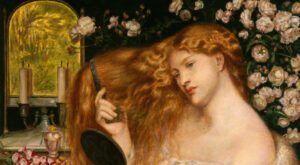
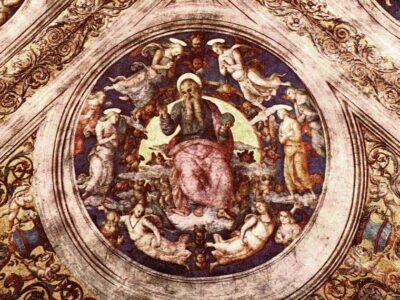
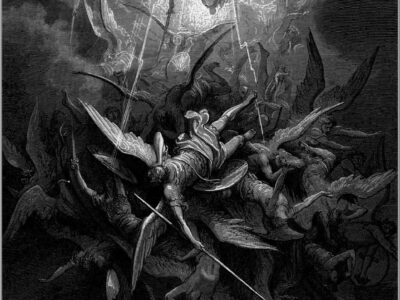
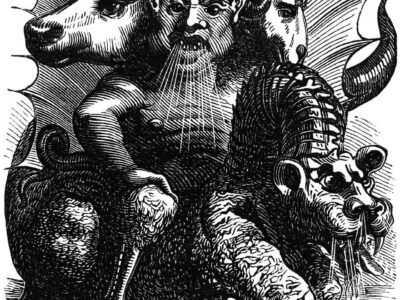
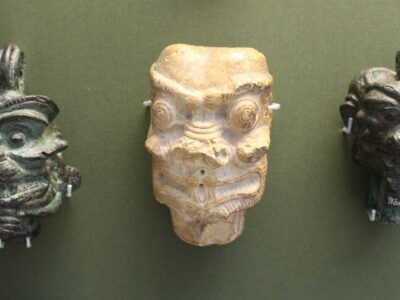
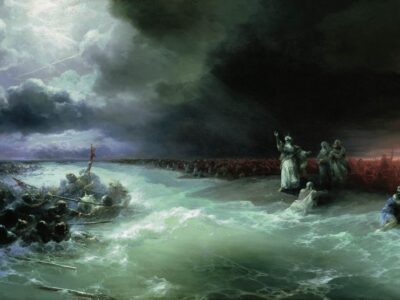
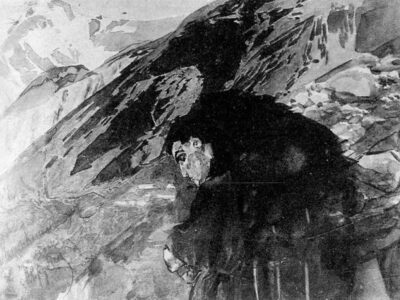
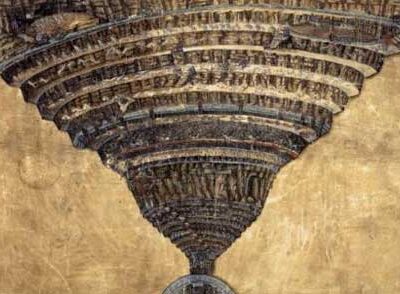
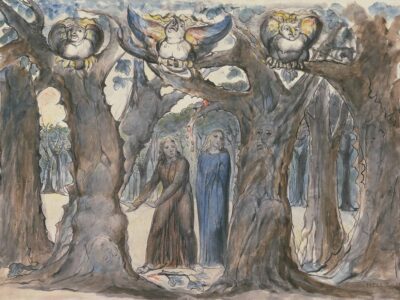
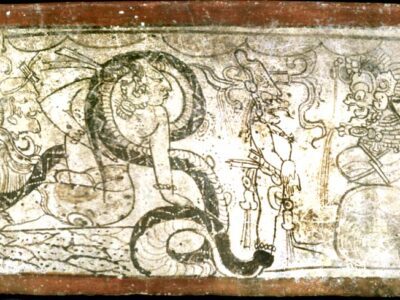
 Lecanomancy: A History of Oil Divination in Ancient & Medieval Judaism
Lecanomancy: A History of Oil Divination in Ancient & Medieval Judaism